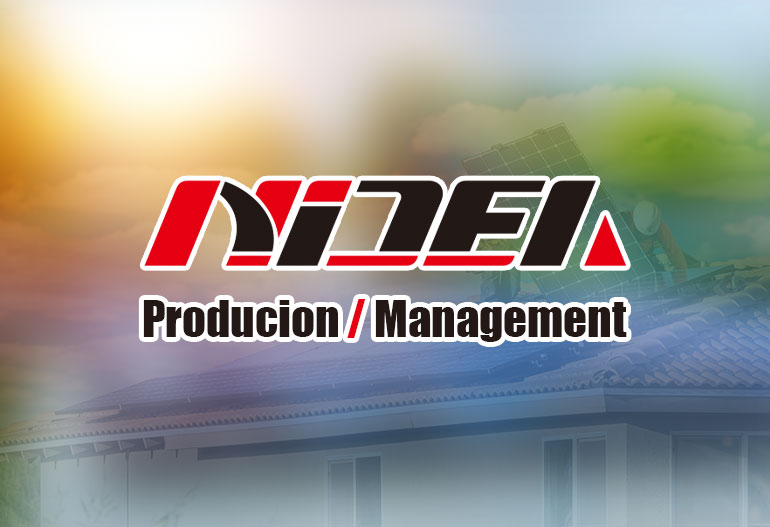Grid-Friendly Design: How NMS Inverters Facilitate Clean Energy Grid Integration
LVRT Capability: Can withstand voltage dips down to 0% of nominal voltage for specified durations (e.g., 150ms at 0% voltage, 500ms at 20% voltage), exceeding the requirements of most regional grid codes. This ensures the inverter does not disconnect during temporary faults, preventing cascading outages.
Reactive Current Injection: During faults, the inverter automatically injects reactive current (up to 100% of its rated current) proportional to the voltage dip, following the "Voltage-Reactive Current" (V-IC) curve mandated by standards like EN 50549. This helps stabilize grid voltage and accelerates fault recovery.
High-Voltage Ride-Through (HVRT): In addition to LVRT, NMS inverters support HVRT, remaining connected during temporary overvoltages (e.g., 120% of nominal voltage for 2s), critical for grids with weak transmission infrastructure.
Synthetic Inertia: The inverter monitors grid frequency and adjusts its active power output in proportion to the rate of frequency change (df/dt). For example, during a frequency drop (e.g., due to a sudden load increase), the inverter releases stored energy (from DC-link capacitors or connected batteries) to inject additional active power, slowing the frequency decline.
Primary Frequency Control: Beyond inertia, NMS inverters provide primary frequency response by adjusting active power output based on frequency deviations (e.g., reducing output if frequency exceeds 50.5Hz, increasing output if below 49.5Hz), helping restore frequency to nominal levels within seconds.
Customizable Parameters: Grid operators can tailor inertia constants (H) and droop coefficients to match grid requirements, ensuring compatibility with both weak and strong grids.
Wide Reactive Power Range: Can operate at power factors from -0.95 (capacitive) to +0.95 (inductive), enabling them to absorb or inject reactive power as needed. This eliminates the need for additional reactive power compensation devices in many cases.
Voltage Control Modes: Supports multiple operating modes, including:
Constant Power Factor: Maintains a fixed power factor (e.g., 0.95 lagging) as specified by grid codes.
Constant Reactive Power: Injects or absorbs a set amount of reactive power (var).
Voltage Regulation: Adjusts reactive power output to maintain a target voltage at the point of common coupling (PCC), critical for weak grids with voltage fluctuations.
Dynamic Response: Reactive power output can be adjusted within 10ms of a voltage deviation, faster than traditional compensation devices, ensuring rapid voltage recovery.
Advanced Switching Topologies: Utilize multi-level inverter designs (e.g., 3-level NPC) and high-frequency switching (up to 20kHz) to reduce harmonic content. Total harmonic distortion (THD) of output current is typically <2% at rated load, well below the 5% limit specified in IEEE 519.
Active Harmonic Filtering: Embedded algorithms detect and cancel harmonics up to the 50th order, mitigating distortion caused by non-linear loads (e.g., EV chargers, variable frequency drives) in the vicinity.
Balanced Three-Phase Output: Even under unbalanced grid conditions, NMS inverters maintain balanced three-phase currents, reducing negative-sequence components that can stress grid equipment.
Islanded Operation: Can operate in standalone mode to power local loads (e.g., hospitals, emergency services) using renewable energy, even when the main grid is down.
Grid Synchronization: Once the grid begins to recover, the inverter synchronizes its voltage, frequency, and phase with the grid before reconnecting, ensuring a smooth transition without voltage spikes.
European Standards: Compliant with EN 50549 (grid connection of renewable energy), EN 61000-6-4 (electromagnetic compatibility), and country-specific codes (e.g., Germany’s VDE-AR-N 4105, Spain’s RD 1699/2001).
North American Standards: Meets IEEE 1547 (interconnection of distributed energy resources) and UL 1741 (safety for inverters), including requirements for FRT, voltage regulation, and anti-islanding protection.
Asian Standards: Complies with China’s GB/T 19964 (solar inverter grid connection) and Japan’s JIS C 8963, which mandate strict harmonic limits and LVRT performance.
International Standards: Aligns with IEC 61727 (solar PV system grid connection) and IEC 61400-21 (wind turbine performance testing), ensuring global deployability.
Successful LVRT during a 3-phase fault, remaining connected and injecting 100% reactive current, helping restore grid voltage within 200ms.
Virtual inertia contribution equivalent to a 500MW synchronous generator, reducing frequency deviations during load changes by 40%.
Compliance with Australia’s AS/NZS 4777.2, enabling the park to participate in the national frequency control market.
Voltage regulation mode, adjusting reactive power output to keep PCC voltage within ±5% of nominal.
Harmonic filtering, ensuring THD <2% even in neighborhoods with high solar penetration (30%+ of peak load).
Compliance with IEEE 1547-2018, which allows distributed resources to provide grid support, reducing the need for utility-owned voltage regulators.
Improved power quality, with flicker (Pst) reduced by 60% compared to conventional inverters.
Successful participation in primary frequency control, earning revenue through grid services.
Compliance with Germany’s VDE-AR-N 4110, which mandates strict FRT and reactive power requirements for wind farms.
Black start capability, enabling the microgrid to restart after outages using renewable energy.
Seamless switching between grid-connected and islanded modes, ensuring uninterrupted power for critical loads.
Coordination with battery storage systems to smooth renewable fluctuations, maintaining frequency within ±0.2Hz.
Digitalization and AI Integration: Future NMS inverters will use artificial intelligence (AI) and machine learning to predict grid conditions (e.g., voltage fluctuations, fault likelihood) and proactively adjust their operation, optimizing grid support and energy harvest.
Enhanced Communication and Coordination: Through advanced communication protocols (e.g., IEC 61850, DNP3), NMS inverters will coordinate with other grid assets (e.g., batteries, smart meters, wind turbines) to form "virtual power plants" (VPPs), providing aggregated grid services.
High-Power Density and Efficiency: Advances in semiconductor technology (e.g., silicon carbide [SiC], gallium nitride [GaN]) will enable NMS inverters to achieve higher efficiency (>99%) and power density, reducing footprint and cooling requirements.
Cybersecurity Hardening: As inverters become more connected, robust cybersecurity features will be integrated to protect against malicious attacks that could disrupt grid stability.

